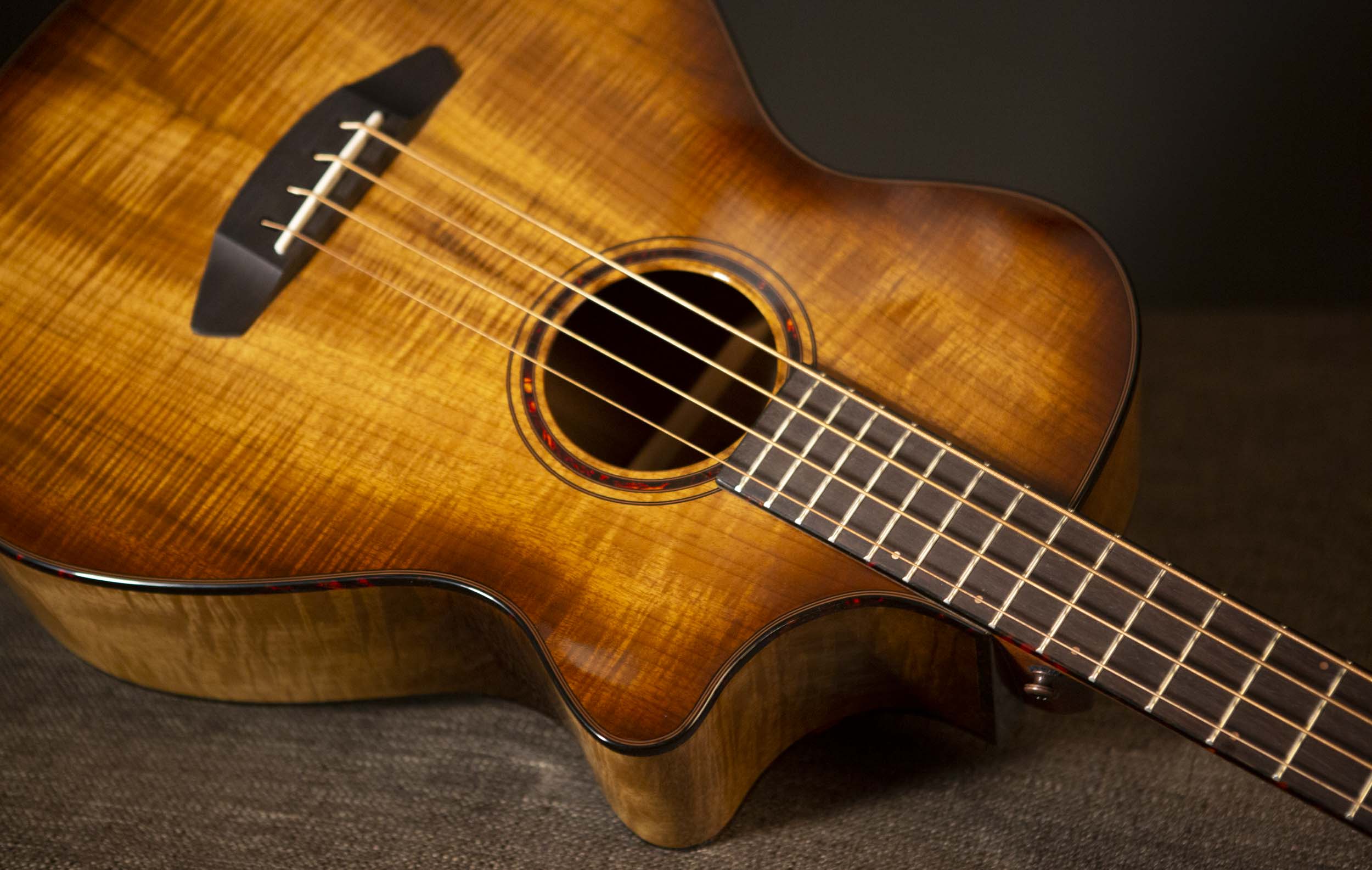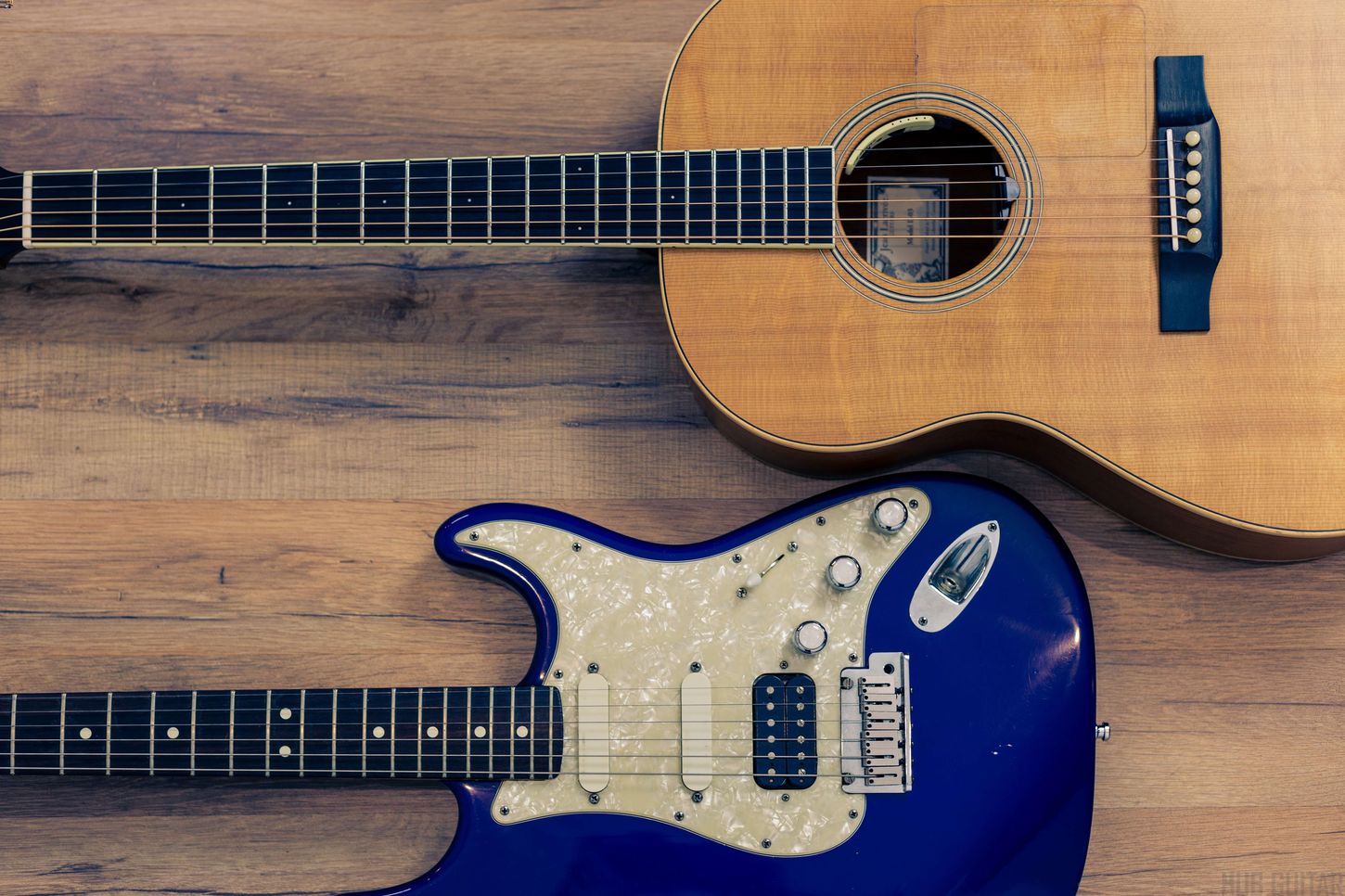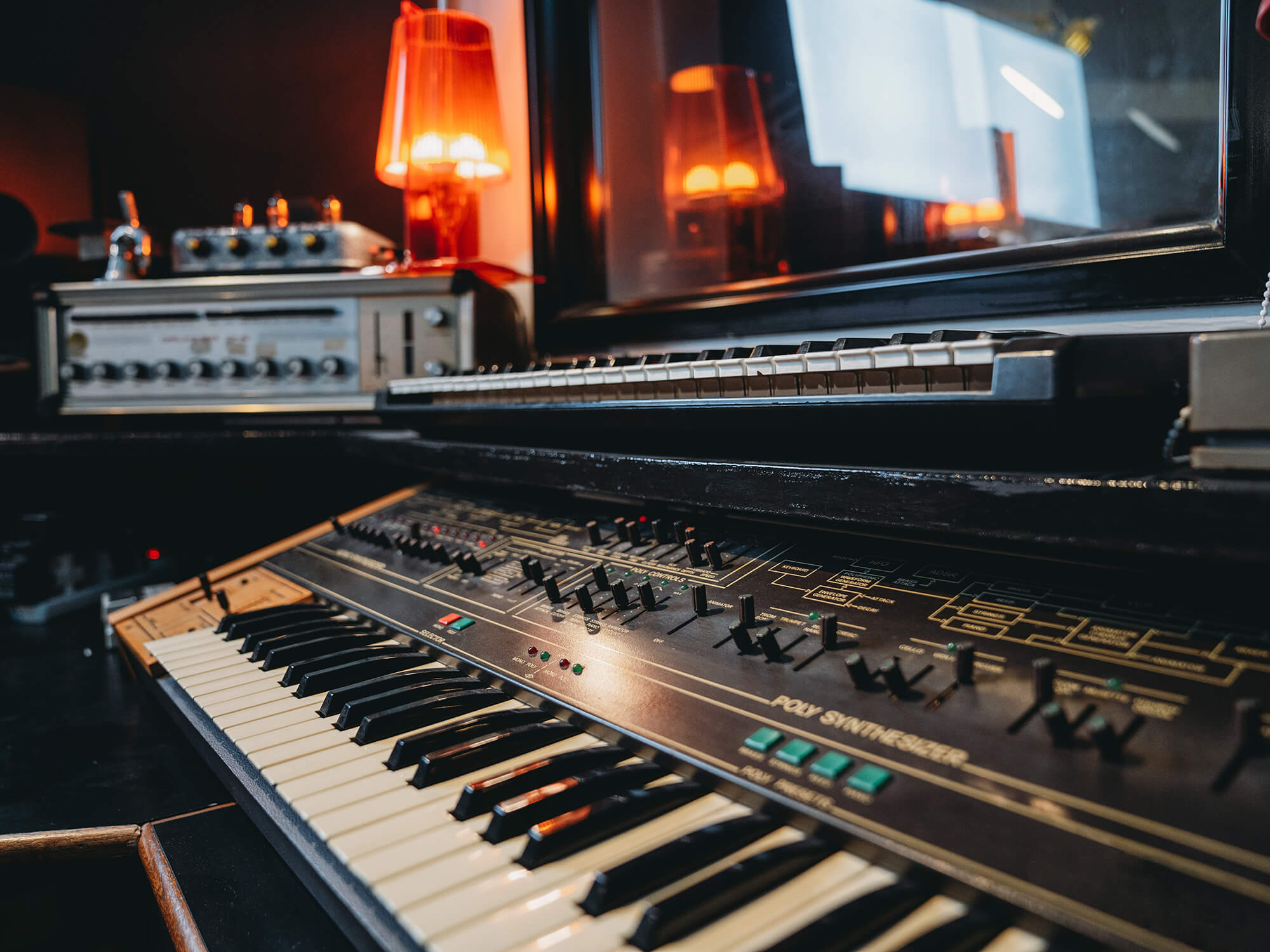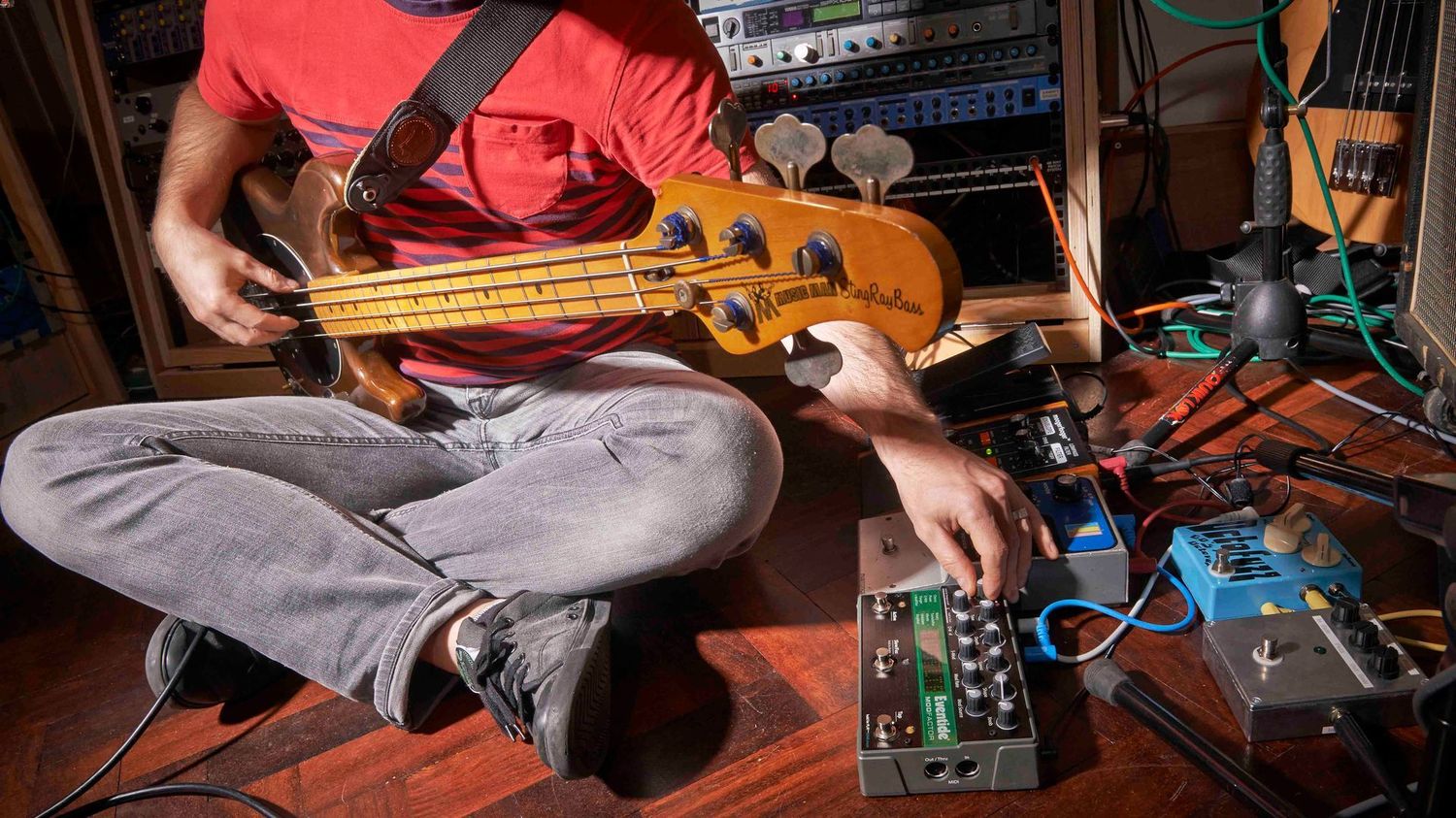Home>Instruments>Bass>How To Make A Guitar Sound Like A Bass


Bass
How To Make A Guitar Sound Like A Bass
Modified: January 22, 2024
Learn the secrets of making your guitar sound like a bass with our step-by-step guide. Enhance your music production skills and explore the depths of bass tones.
(Many of the links in this article redirect to a specific reviewed product. Your purchase of these products through affiliate links helps to generate commission for AudioLover.com, at no extra cost. Learn more)
Table of Contents
Introduction
Are you a guitarist who wants to add the low-end rumble of a bass guitar to your music? Or perhaps you’re a bassist looking to experiment with new sounds? Either way, you’ve come to the right place! In this article, we will explore various techniques and equipment options that can help you make your guitar sound like a bass.
Why would you want to make your guitar sound like a bass? Well, sometimes a bass guitar can bring a different texture and depth to your music that you can’t achieve with a standard guitar. It can add richness to your chord progressions, make your riffs more powerful, or even help you create unique sounds that stand out.
While nothing can fully replicate the authentic sound of a bass guitar, there are several techniques and tools you can use to come close. Whether you’re a beginner or an experienced musician, these tips will guide you on how to achieve that bass-like tone on your guitar.
In the following sections, we will dive into the specifics of choosing the right equipment, adjusting guitar tuning, utilizing octave pedals, using EQ and tone controls, exploring playing techniques, and experimenting with string gauges. By the end of this article, you’ll have a good understanding of how to make your guitar sound like a bass and be well-equipped to explore new musical horizons.
So, let’s dive in and explore the exciting world of transforming your guitar into a bass!
Choosing the Right Equipment
When it comes to making your guitar sound like a bass, having the right equipment is essential. Here are some key elements to consider:
- Pickups: The pickups on your guitar play a significant role in determining the overall tone. To achieve a bass-like sound, consider using humbucker pickups or single-coil pickups with high-output specifications. These pickups tend to have a thicker and fuller sound that can mimic the characteristics of a bass guitar.
- Strings: Choosing the right strings is crucial in achieving a convincing bass sound. Opt for heavier gauge strings, as they provide more tension and a deeper tone. Look for strings specifically designed for baritone or extended-range guitars, as these are generally thicker and ideal for emulating the low-end frequencies of a bass.
- Amplification: To capture the low frequencies accurately, a suitable bass amplifier is necessary. While guitar amplifiers can be used, they might not reproduce the low-end frequencies as effectively as a dedicated bass amp. Consider investing in a quality bass amplifier or utilizing amp simulation software that offers bass-specific amp models.
- Effects pedals: Various effects pedals can help enhance the bass-like qualities of your guitar. Octave pedals, for example, generate a sub-octave signal that mimics the sound of a bass guitar. Envelope filters, compressors, and chorus pedals can also be used to shape the tone and add depth to your sound.
Remember to experiment with different combinations of equipment to find the best setup for your desired bass-like sound. Additionally, don’t underestimate the importance of a solid instrument setup and intonation adjustments. Properly setting up your guitar ensures optimal playability and tone, regardless of the equipment you use.
Now that we’ve covered the equipment aspect, let’s move on to the next technique: adjusting guitar tuning.
Adjusting Guitar Tuning
One of the simplest and most effective ways to make your guitar sound like a bass is by adjusting the tuning of your strings. By lowering the pitch of your strings, you can achieve a deeper and more resonant sound that resembles that of a bass guitar. Here are a few tuning options to consider:
- Dropped Tuning: One common method is to tune your guitar down to a lower pitch. A popular choice is dropping the lowest string (E) down to D, creating a DADGBe tuning. This will give your guitar a lower register and a fuller sound, similar to that of a bass.
- Baritone Tuning: Another option is using a baritone tuning, which involves tuning your guitar down even lower. A baritone guitar usually has a longer scale length and is designed to be tuned to a lower range, but you can achieve a similar effect on a regular guitar. Common baritone tunings such as B standard (BEADF#B) or C standard (CGCFAD) can make your guitar sound extremely deep and bass-like.
- Drop D Tuning: While not as low as dropped or baritone tuning, drop D tuning (DADGBE) can still provide a beefier sound. By dropping your low E string down to D, you add an extra level of depth to your guitar’s tone. This tuning is frequently used in rock and metal genres to create heavy and aggressive riffs.
Experimenting with different tunings will allow you to explore various sonic possibilities. It’s important to note that altering your guitar’s tuning may require adjustments to the instrument’s setup, such as adjusting the truss rod or intonation. When changing tunings, make sure to check your guitar’s intonation to ensure accurate pitch across the fretboard.
Now that you’ve explored tuning options, let’s move on to utilizing octave pedals.
Utilizing Octave Pedals
An octave pedal is a powerful tool for achieving a bass-like sound on your guitar. These pedals generate a signal that is one or two octaves lower than the original note you play, effectively simulating the sound of a bass guitar. Here’s how you can utilize octave pedals:
1. Sub-Octave Effect: Most octave pedals come equipped with a sub-octave effect. When engaged, this effect adds a signal that is one octave below the note you play. This can instantly create a bass-like tone, giving your guitar a fuller and deeper sound. Experiment with the blend control on the pedal to find the perfect balance between the original guitar sound and the sub-octave effect.
2. Dual Octave Effect: Some octave pedals offer a dual octave effect, generating both a sub-octave and an octave-above signal. This allows you to create complex and layered sounds, similar to playing a bass guitar and a higher-pitched instrument simultaneously. This feature is particularly useful for creating unique textures and harmonies in your playing.
3. Tracking and Latency: When using an octave pedal, it’s important to consider its tracking capabilities and latency. Good tracking means that the pedal accurately detects the notes you play and generates the octave effect in real-time. Low latency ensures that there’s no noticeable delay or lag between your playing and the generated sound. Look for pedals with fast tracking and low latency to achieve a more natural and responsive bass-like sound.
4. Blending with EQ and Effects: Experiment with combining your octave pedal with EQ and other effects to fine-tune your bass-like tone. Boosting the low frequencies with an EQ pedal can further enhance the depth and thickness of the sound. Additionally, applying effects like compression or distortion can add character and warmth to your bass-like guitar tone.
Remember to adjust the settings on your octave pedal based on your playing style and the specific sound you’re aiming for. Whether you want a subtle bass-like undertone or a full-blown bass guitar emulation, octave pedals can be a game-changer in achieving your desired sound.
Now that you have an understanding of utilizing octave pedals, let’s explore using EQ and tone controls.
Using EQ and Tone Controls
EQ (Equalization) and tone controls are invaluable tools when it comes to shaping the sound of your guitar and making it resemble a bass. By manipulating the frequencies, you can emphasize the low-end frequencies and achieve a fuller and more bass-like tone. Here’s how to effectively use EQ and tone controls:
1. Boost the Low Frequencies: Start by increasing the bass frequencies on your guitar’s EQ or tone controls. This will enhance the low-end response and give your guitar a more prominent bass-like character. Experiment with different levels of boost to find the right balance that suits your taste and musical style.
2. Cut the High Frequencies: Reducing the treble frequencies can help soften the brightness and make the guitar sound deeper and smoother. By attenuating the high frequencies, you can further enhance the illusion of a bass guitar tone. Keep in mind that cutting too much high-end can result in a muffled sound, so find a sweet spot where the guitar still retains clarity.
3. Midrange Adjustments: Depending on the tonal characteristics of your guitar, you may want to make adjustments to the midrange frequencies. Experiment with different midrange settings, such as boosting the lower midrange for added warmth or cutting the higher midrange to create a more bass-oriented sound. These adjustments can help fine-tune the overall tone and make it closer to that of a bass guitar.
4. Tone Controls on Effects and Amplifiers: If you’re using effects pedals or amplifiers with built-in tone controls, utilize these to shape your sound. Some pedals offer specific bass-boosting or bass-cutting options, allowing you to tailor your tone even further. Explore these options to find the ideal setting that provides the bass-like qualities you desire.
Remember that every guitar and pickup combination is unique, so the ideal EQ settings may vary. Take the time to experiment and listen carefully to how each adjustment affects the overall sound. Also, keep in mind that EQ and tone controls should complement other techniques, such as tuning and octave pedals, to achieve the desired bass-like effect.
Now that you know how to use EQ and tone controls effectively, let’s move on to playing techniques that can contribute to a bass-like sound.
Playing Techniques for Bass-like Sound
While equipment and tone adjustments play a significant role, your playing technique also plays a crucial part in achieving a convincing bass-like sound on your guitar. Here are some techniques to consider:
1. Root Note Emphasis: Focus on playing the root notes of chords or basslines. The root note is the foundation of the chord progression and can create a bass-like effect when played on the lower strings. By emphasizing the root notes, you can give your guitar playing a solid and grounded feel.
2. Palm Muting: Use palm muting to dampen the strings slightly, creating a muted and percussive sound. This technique is commonly used by bassists to enhance the rhythmic aspect of their playing. By incorporating palm muting into your guitar playing, you can simulate the muted and punchy tones typically associated with bass guitar.
3. Fingerstyle or Pick Playing: Experiment with different playing styles to achieve a more bass-like sound. Fingerstyle playing, using your fingers to pluck the strings, can emulate the dexterity and articulation of a bassist. If you prefer using a pick, try playing closer to the bridge to achieve a brighter and more defined tone.
4. Bass-style Riffs and Patterns: Learn and incorporate bass-style riffs and patterns into your guitar playing. These include techniques such as slides, hammer-ons, pull-offs, and walking basslines. By incorporating these techniques, you can create the illusion of playing a bass guitar, adding depth and complexity to your sound.
5. Utilize Slap and Pop Techniques: Slap and pop techniques are commonly associated with bass guitar playing. While they may be more challenging on a guitar, you can adapt these techniques to achieve a bass-like sound. Experiment with slapping the strings with your thumb and popping the strings with your fingers to add rhythmic and percussive elements to your playing.
Remember to practice these techniques consistently to improve your skills and incorporate them seamlessly into your playing. Pay attention to the dynamics, timing, and nuances of each technique, as they play a crucial role in achieving an authentic bass-like sound on your guitar.
Now that you’ve learned about playing techniques, let’s move on to experimenting with string gauges.
Experimenting with String Gauges
String gauge refers to the thickness of the strings on your guitar. It can have a significant impact on the overall sound and playability, especially when trying to achieve a bass-like tone. Here’s how experimenting with string gauges can help you dial in the desired sound:
1. Thicker Strings: Consider using heavier gauge strings, as they offer more tension and produce a deeper, bass-like sound. Thicker strings provide a fuller tone and can add richness to your playing. They also tend to have a better low-end response, making them closer to the characteristics of a bass guitar.
2. Hybrid Gauge Sets: An alternative option is to try hybrid gauge sets, which combine lighter gauge strings for the higher strings and heavier gauge strings for the lower strings. This setup can give you the best of both worlds – flexibility for lead playing on the higher strings and a beefier tone in the lower register.
3. Flatwound or Halfwound Strings: Flatwound or halfwound strings have a smooth and polished surface, resulting in a smoother feel and a warmer tone. These strings are commonly associated with bass guitars and can help you achieve a more authentic bass-like sound. However, keep in mind that they may require adjustments to your guitar’s setup due to their different tension characteristics.
4. Drop-tuning Considerations: If you frequently experiment with drop tunings, especially lower than standard, using thicker strings becomes even more beneficial. Thicker strings are less prone to intonation issues and can handle the increased tension of lower tunings more effectively, resulting in better stability and tonal clarity.
5. Personal Preference: Ultimately, the choice of string gauge depends on your personal preference and playing style. It’s essential to find a balance between achieving a bass-like sound and maintaining playability. Experiment with different string gauges and consider factors like comfort, tone, and how it suits your playing needs.
Remember to make any necessary adjustments to your guitar’s setup, such as truss rod, bridge height, and intonation, when changing string gauges. This ensures optimal playability, intonation, and tone across the fretboard.
Now that you’ve explored the significance of string gauges, you’re well-equipped to continue your journey of making your guitar sound like a bass! In the next section, we’ll conclude our article with a summary and some final thoughts.
Conclusion
Capturing the deep and resonant sound of a bass guitar on your regular guitar may require some experimentation and adjustments, but it is definitely achievable. By utilizing the right equipment, adjusting guitar tuning, utilizing octave pedals, using EQ and tone controls, incorporating bass-like playing techniques, and experimenting with string gauges, you can create a convincing bass-like sound that enhances your music.
Choosing the right equipment, such as pickups, strings, amplification, and effects pedals, is crucial in achieving a bass-like tone. Additionally, adjusting your guitar’s tuning to lower pitches, using octave pedals to generate low-frequency signals, and utilizing EQ and tone controls to shape your sound are effective techniques to explore.
When it comes to playing techniques, focusing on root notes, employing palm muting, and incorporating bass-style riffs and patterns will further enhance the illusion of a bass guitar. Experimenting with different string gauges can also make a significant difference in the overall tonal quality and playability of your guitar.
Keep in mind that while these techniques can help you achieve a bass-like sound, they will not fully replicate the unique character of a bass guitar. Nevertheless, by combining these methods and fine-tuning your setup, you can create a rich and powerful low-end presence that adds depth and richness to your music.
Remember to trust your ears, experiment, and adjust accordingly to achieve the desired result. Each guitar and player is unique, so don’t be afraid to explore and find your own signature bass-like sound.
With the knowledge and techniques presented in this article, you’re well-equipped to embark on the journey of making your guitar sound like a bass. So, plug in, start experimenting, and enjoy the boundless possibilities that await you in your music!











